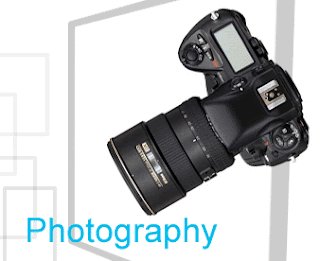 Digital photography: The art of digital photography
Digital photography: The art of digital photographyMany of the techniques used in traditional photography also apply to digital photography. The composition of the picture, use of light, line, shape, pattern, etc. also apply to digital photography. Three elements that are different in digital photography are white balance, picture resolution, and digital effects.
White Balance
In a traditional camera, film records and determines the colors of the scene captured in the photograph. As digital cameras have no film to interpret color, they use white balance settings for this purpose. These settings (called Kelvin temperature ratings) are represented by symbols for sun, indoor light, clouds and shade on most digital displays and can be manually selected. The Auto function, however, enables the camera to adjust the settings automatically. For most non-professional needs, this is quite satisfactory.
Some digital cameras contain a histogram function that will also help you adjust your light exposure.
Resolution
Digital cameras record images in pixels. If you expand a picture on your computer with graphic software by zooming in on the picture, you will eventually see the picture rendered as a series of colored dots. The more dots per inch in a picture, the higher the resolution. High-resolution photos have better image quality and bigger file sizes as well.
Many digital cameras on the market allow the user to select the low or high-resolution settings. Since resolution affects file size, more of the photos taken in low resolution can be stored in your camera at a time. High-resolution images may saved in BMP, TIFF, or RAW image formats. These are large file type images. High resolution settings vary with each camera. A low resolution setting on one camera is a high resolution setting on another. It all depends on the camera’s megapixel resolution that could be anywhere in the range of .1 megapixels to 9.1 megapixels.
Resolution is an important consideration when buying your digital camera. If you are only going to be using your images on the web, very high-resolution images will not be as mandatory for you (although high resolution graphics allow more manipulation of the graphic in graphics software programs). Web images are typically lower resolution images since file size is a consideration for the web. If you are going to be printing your images, however, high resolution is necessary for a quality print. To be able to expand an image for an 8x10 print is going to require a high-resolution graphic for a good quality photo.
Digital Effects
Many digital cameras also have built-in effects that can be used to change the presentation of your photos. Fisheye is an example of one such feature that will reshape an image giving it a totally different effect. Soft-focus, Portrait, Scene, Landscape, and Wide-angle are some of the focusing effect capabilities that your digital cameral may have. These are nice features to have fun with. If you have a graphics software program, your images can be further manipulated once you have downloaded your images to your computer.
